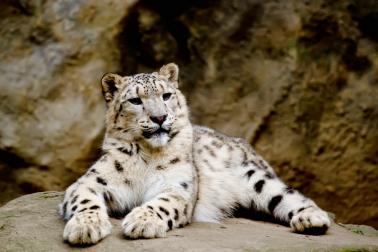
What do the Javan rhino, the wild yam, the red panda, the spoon-billed sandpiper and the coral tree have in common? On first inspection, you’ll probably be hard-pressed to find a connection. There is one – but it’s not a happy one. These are all species that have the unfortunate status of making the list of the world’s 100 most threatened species, as estima ted by the International Union for the Conservation of Nature''s Species Survival Commission.
Experts in wildlife conservation have raised awareness of the terrible threats that face some of the species on the planet. They include tigers, orangutans, whales and snow leopards. It tends to be these large and beautiful mammals that make the headlines, although there is a growing awareness of threats to other organisms, like the corals in the world’s great coral reefs. In fact, many of the most threatened species aren’t particularly cuddly or spectacular.
Saving the forest coconut, or the Okinawa spined rat, or the Luristan newt doesn’t have quite the same appeal as saving the tiger. Yet these are all creatures that are highly threatened. For some, like the Sumatran and Javan rhinos, population numbers have already fallen to the point where regeneration is unlikely and extinction a near certainty. In a world experiencing an economic crisis, funding is in decline as well. With less money for measures to halt the decline, including captive breeding and public awareness campaigns about the importance of wildlife conservation, the future looks bleak.
The facts and figures make depressing reading, and if you add endangered (as opposed to ‘critically endangered’) species to the list, it’s a truly horrifying picture, that includes chimps, gorillas and numerous other primates, as well as a variety of big cats. Meanwhile, it’s the little known species that are most likely to disappear, without a whimper.
You almost certainly have never seen a Table Mountain Ghost Frog which lives only in a small area of Cape Town’s famous flat-topped mountain. Its decline is significantly due to the pine forests that were planted there, sucking the water from the perennial streams and reducing the available habitat. The Ethiopian Liben Lark is a bird on the brink, also due to habitat destruction as stock grazing has expanded. In 2009 conservationists gave it four years.
Climate change is a key factor in extinctions, but human behaviour is often the driving force. The Common Sawfish, with its sword-like snout, is a species many will know. It is now anything but common, dying in fishing nets and over-exploited for traditional medicines. You may also have heard of Attenborough’s Pitcher Plant, a huge insect-eating plant from the Philippines, named after the naturalist David Attenborough. That’s on the list too.
When even the better-known species remain under severe threat what hope exists for the insects, fungi and small mammals on the list? The world will be a poorer place without them. The least we can do is to be aware of this, share the information, and make sure we do our bit for saving the environment they all call home.

